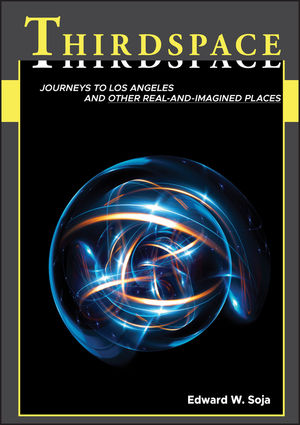Thirdspace: Journeys to Los Angeles and Other Real-and-Imagined PlacesISBN: 978-1-55786-675-2
Paperback
352 pages
November 1996, Wiley-Blackwell
 This is a Print-on-Demand title. It will be printed specifically to fill your order. Please allow an additional 10-15 days delivery time. The book is not returnable.
Other Available Formats: Hardcover
|
||||||
The book's central argument is that spatial thinking, or what
has been called the geographical or spatial imagination, has tended
to be bicameral, or confined to two approaches. Spatiality is
either seen as concrete material forms to be mapped, analyzed, and
explained; or as mental constructs, ideas about and representations
of space and its social significance. Edward Soja critically
re-evaluates this dualism to create an alternative approach, one
that comprehends both the material and mental dimensions of
spatiality but also extends beyond them to new and different modes
of spatial thinking.
Thirdspace is composed as a sequence of intellectual and empirical journeys, beginning with a spatial biography of Henri Lefebvre and his adventurous conceptualization of social space as simultaneously perceived, conceived, and lived. The author draws on Lefebvre to describe a trialectics of spatiality that threads though all subsequent journeys, reappearing in many new forms in bell hooks evocative exploration of the margins as a space of radical openness; in post-modern spatial feminist interpretations of the interplay of race, class, and gender; in the postcolonial critique and the new cultural politics of difference and identity; in Michel Foucault's heterotopologies and trialectics of space, knowledge, and power; and in interpretative tours of the Citadel of downtown Los Angeles, the Exopolis of Orange County, and the Centrum of Amsterdam.



